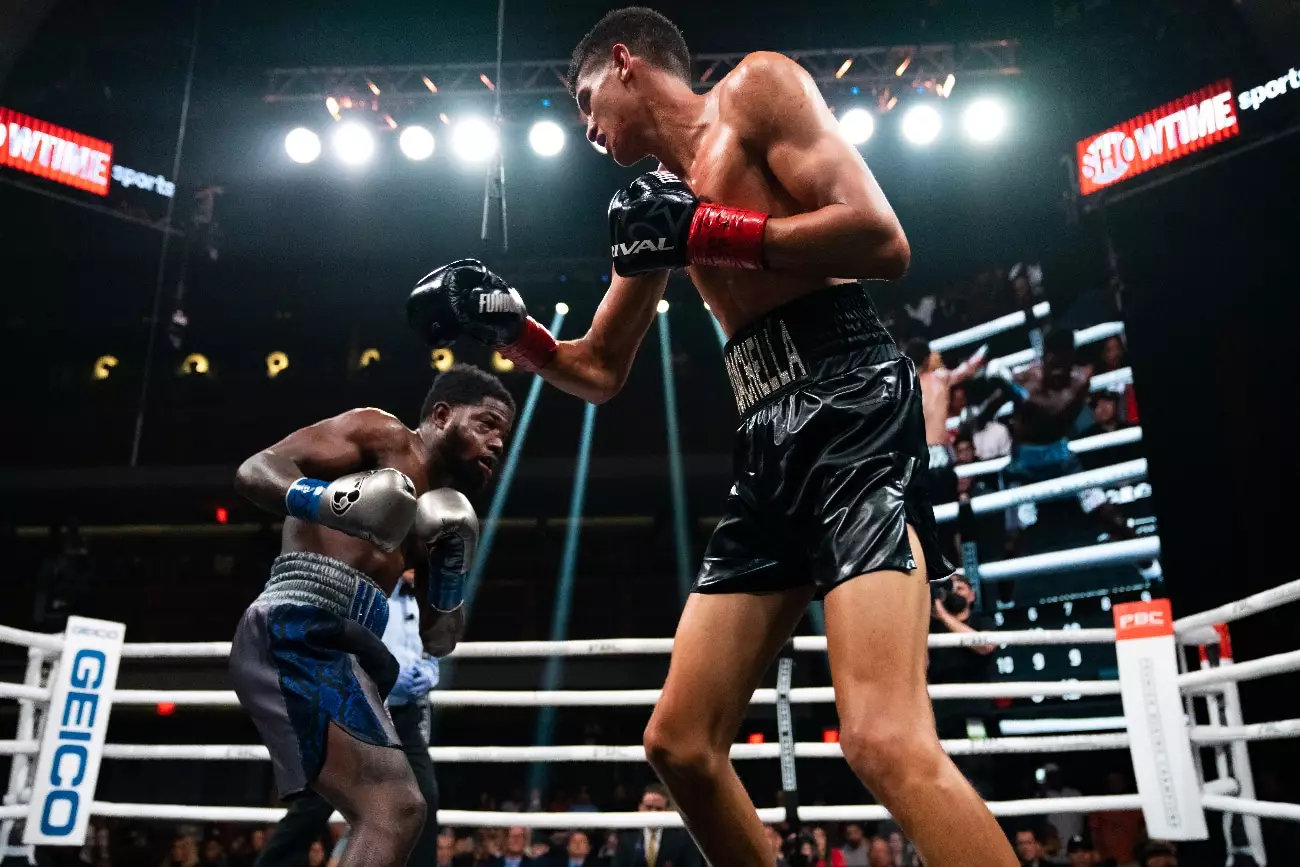At 37 years old, Terence Crawford finds himself at a critical juncture in his boxing career. After his debut at 154 pounds last August against Israil Madrimov, that moment marked a significant transition for the undefeated champion (41-0, 31 KOs). The fight, characterized by a less impressive performance than expected, raised questions about whether Crawford can retain his elite status in the rapidly evolving sport of boxing. Facing Sebastian Fundora—a formidable 6’6″ opponent known for his relentless punching power—Crawford will need to dig deep to remain competitive at such a challenging weight class.
The stark age difference between Crawford and the 26-year-old Fundora further complicates the scenario. While Crawford is noted for his boxing intelligence and technique, the youthful vigor and intensity of Fundora may require Crawford to devise a new strategy to secure victory. This challenge will be more than just physical; it necessitates adapting his approach against a younger fighter who typically operates at a high pace right from the start.
Crawford’s move to 154 pounds was perhaps an attempt to cement his legacy by seeking bouts against high-profile opponents. However, the lack of progress towards a fight against Canelo Alvarez, the reigning champion at 168 pounds, signifies a potential stumble in his ambition. Canelo, while a significant figure in boxing, seems less inclined to engage with Crawford simply for promotion or spectacle. This reality could leave Crawford in a limbo where high-stakes fights evade him, despite his demonstrated capabilities.
As Crawford aims for a title against Fundora, he must overcome doubts about his effectiveness in this new division. Analysts have pointed out that Crawford has never been known for a high-volume output in the ring; he is more methodical, taking calculated risks while banking on movement and timing. The question is, can he adjust his strategy and output to contend with someone like Fundora who is known for his activity and relentless aggression?
The Road Ahead: Potential Matchups and Limitations
Renowned figures in the boxing community, like Hank Lundy, have voiced concerns about Crawford’s ability to “kick it into a different gear.” In contrast, younger fighters, like Fundora, tend to start a match with high intensity and maintain that tempo throughout. Crawford’s traditional style, which tends to ramp up over several rounds, may place him at a disadvantage, especially against someone who operates at full throttle from the opening bell.
The performance against Madrimov served as an indicator of where Crawford stands. He showed resilience, managing to absorb punches and ultimately win a close decision. Yet, this fight revealed a plateau in his skill set that raises concerns about how well he can handle even tougher foes ahead. Critics argue that this performance signifies a potential ceiling for Crawford, suggesting he might struggle against bigger opponents in the future, particularly if he pursues Canelo.
Roy Jones Jr. recently commented on whether Crawford should consider moving back down to fight rising stars like Jaron “Boots” Ennis. For many, this reflects an ongoing narrative within boxing about how established champions relate to emerging talents. There are implications that Crawford might be seeking lucrative matchups over risky ones. His current trajectory could have potential consequences: yielding to fear of losing his standing among elite competitors who can impact his legacy.
In the quote by Roy Jones Jr., observations about Crawford’s motivations—essentially aiming for significant financial matches rather than facing formidable opponents—suggest a shift in his boxing strategy. He seems focused on creating legacy-defining bouts against high-profile names like Canelo Alvarez. For Crawford, this might mean only taking calculated risks, which some perceive as an evasion of tougher contenders in the sport.
Crawford’s movement up in weight without defending his IBF mandatory title against Boots Ennis has likely influenced perceptions of his character as a fighter. This dismissal can breed skepticism about whether Crawford would deliver against other tough fighters down the line. In contrast, legends of the sport often engage with the most challenging opponents available to truly bolster their records.
Terence Crawford stands on the precipice of a crucial phase in his boxing career. As he prepares for pivotal matchups that could influence his legacy, the questions surrounding his adaptability, longevity, and the choices of opponents he engages with will inevitably define the remainder of his time in the ring. With the right strategy and drive, Crawford can still emerge victorious; however, success is far from guaranteed in a sport where age, young talent, and strategic evolution play critical roles.

